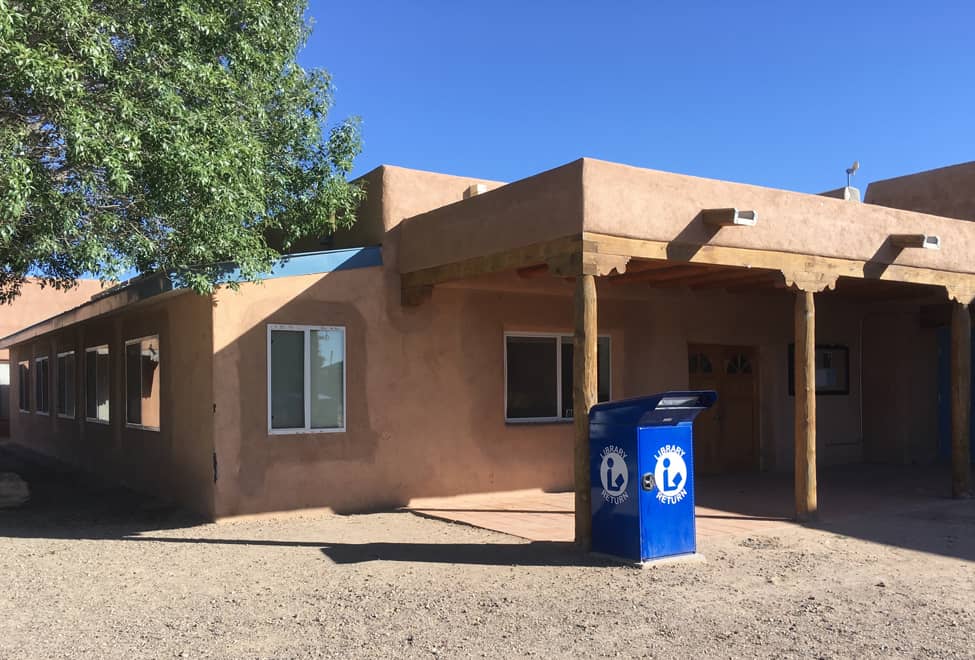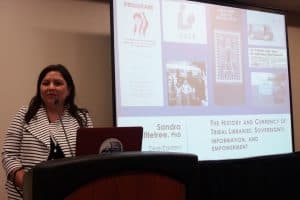
About 33 miles north of Albuquerque, New Mexico, sits the Santo Domingo Pueblo Library (SDPL), at the heart of its community. But to access Wi-Fi you have to step out the front doors onto a ceramic, Santa Fe–style portal and count 14 titles to the right, the only sure spot for an internet connection. Until this past summer, the library had such poor broadband service that it routinely missed deadlines for grant applications.
SDPL turned those missed opportunities into a vision for the pueblo. The library worked with the Tribal Council to unite Santo Domingo with the Cochiti, San Felipe, and Santa Ana Pueblos and establish the Middle Rio Grande (MRG) Pueblo Tribal Consortium, a unique, 100% tribally-owned fiber optic network. MRG secured a 90% discount on the project’s construction costs in March 2017 through its eligibility to participate in the federal E-Rate program, which provides internet discounts to public libraries and K–12 schools. The $4 million project, completed in June 2018, allows SDPL to boast limitless broadband capacity, moving from the trickle of a T1 line to the equivalent of the Rio Grande at flood stage.
The third National Joint Conference of Librarians of Color—which brought hundreds of library professionals to Albuquerque September 26–30 to share lived experiences, best practices, and build community—provided the opportunity to visit SDPL and the tribal offices as well as the Pueblo de Cochiti Library and neighboring landscape.
The 1,672-square-foot SDPL is nestled in the pueblo’s community center. None of the 600-plus households on the pueblo has an internet connection, so they rely on the library to go online. Signs of the new broadband capacity include a 72-inch smartboard waiting to be hooked up and a brand-new server room, air conditioned and protected from the wind and dust by double doors.
The goal is to incorporate the new broadband services with the pueblo’s vibrant culture. The new technology will enable SDPL to have video conferences with county, state, and federal grant agencies; coding classes for youth and young adults; and promote entrepreneurial opportunities for tribal artisans. SDPL is also encouraging the 22 tribal government programs to use the internet-connected whiteboard for outreach activities, and the Tribal Council will use it for long-distance job interviews, tribal consultation with congressional and state representatives, and more. The Kewa Keres Language Program, a collaboration with Santa Fe Indian School, will use the broadband for language preservation and revitalization.
Connecting more tribal libraries
Replicating the success of SDPL is not an option on many tribal lands because of a small but significant roadblock in the E-Rate program that makes some tribal libraries ineligible for funding. To raise awareness of the issues facing tribal libraries, this week ALA released “A Broadband Imperative: Equitable Opportunity for Tribal Communities through Libraries.” This policy brief includes how the Tribal Connect Act addresses the shortcomings of the E-Rate program for tribal libraries, success stories like MRG, and takeaways for decision makers. For more information, visit ALA’s E-Rate resources.


